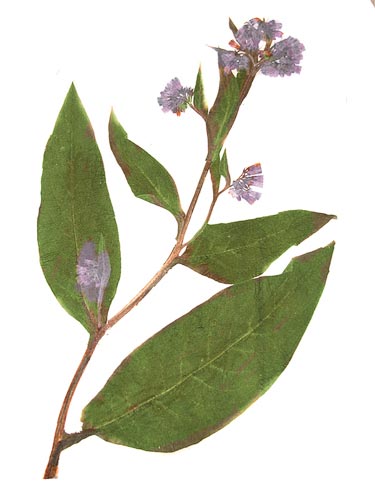Relatives
Symphytum officinale M.B. - Common Comfrey.
Taxonomic position.
Family Boraginaceae Juss., genus Symphytum L.Morphology and biology.
Perennial herbaceous plant. Root system intensely developed, taproot thickened, with many caudices. Stems 40-90 cm tall, straight, branched, ribbed, irregularly cylindrical, poorly pubescent. Leaves cauline, with somewhat winged petioles, ovate-elongate, weakly pubescent, glaucous. Inflorescence a double cincinnus, lax, 26-36-flowered, up to 10-12 cm long. Calyx 5-cleft, corolla lobes bent outwards. Corolla dirty-violet, pinkish or lilaceous, dark violet when in bud. Fruit a nutlet, nearly ovoid, nitid, black. Flowers in June - July, fruits in July - August. Entomophilous plant.Distribution.
European part of the former USSR (except for north), Caucasus.Ecology.
In damp meadows, at watersides. Typical mesophyte.Use and economic value.
Forage plant. Used as forage mainly mixed with other silage crops and perennial grasses. Medicinal, melliferous, ornamental.References:
Galushko AI. 1980. Flora of the North Caucasus: Handbook. V.2. 352 p. (In Russian).Grossheim AA. 1967. Flora of Caucasus. 2nd ed. V.7. P.263-264. (In Russian).
Medvedev PF., Smetannikova AI. 1981. Forage plants of European part of the USSR. Leningrad: Kolos. 336 p. (In Russian).
Minjaev NA., ed. 1981. Manual of higher plants of the North-Western European part of RSFSR. Leningrad. 376 p. (In Russian).
Meusel H. et al. 1965. Vergleichende Chorologie der Zentraleuropaischen Flora. Jena. 583 S.


